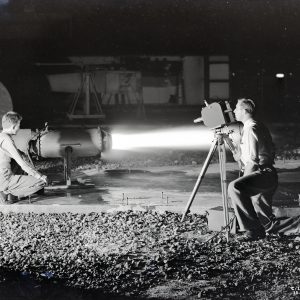
1947 Lewis Inspection
The first Inspection at the Cleveland laboratory, held in October 1947, emphasized issues pertaining to post-war development of the turbojet engine.
The NACA’s Inspections began in the 1920s as interactive conferences guided future research. As the NACA expanded in the 1940s, the Inspections became more elaborate showcases for its laboratories. NASA made sporadic attempts to carry on the Inspections in the 1960s and 1970s.
This page describes the NACA, preparations required for each Inspection, and the evolution of the Inspections from interactive conferences in the 1920s to the elaborate showcases of the 1940s and 1950s to NASA sporadic events in the 1960s and 1970s.
Congress established the National Advisory Committee for Aeronautics (NACA) on March 3, 1915, to coordinate and promote U.S. aeronautical research during World War I. The nation that produced the first human flight had fallen behind the Europeans in aviation less than a decade later. At the time U.S. research and development lacked direction and thus was uneven and slow. Initially the NACA consisted of 12 uncompensated representatives from the military, universities, and industry as well as Secretary John Victory. The group met periodically to identify future trends in aeronautics and steer the Nation’s research in those directions.
In the 1920s, the committee established the Langley Memorial Aeronautical Laboratory in Hampton, Virginia, to conduct research of its own. The NACA named George Lewis as director of research in 1924 to supervise the research and resulting reports. The Langley staff and its collection of test facilities, particularly wind tunnels, steadily increased in the 1920s and 1930s. The NACA’s contributions to aircraft design and operational problems during this period spearheaded the ascendancy of the U.S. airline industry.
In the late 1930s, NACA leaders discovered that the Europeans, the Germans in particular, were developing military aircraft that could fly higher and faster than the U.S. models. The NACA decided to create two new research laboratories to increase their efforts. Construction of the Ames Aeronautical Laboratory in Sunnyvale, California, and the Aircraft Engine Research Laboratory in Cleveland, Ohio, commenced in 1940 and 1941, respectively. Ames specialized in the aerodynamics of high-speed flight, and the Cleveland laboratory was devoted to improving aircraft engines.
With the onset of World War II, the NACA laboratories expended all of their efforts on improving existing military aircraft and their engines. After the war, the NACA returned to more of a research-based operation and focused on new technologies such as the jet engine, supersonics, and missiles. The research led to the breaking of the sound barrier, dramatic increases in jet aircraft, and the development of high-energy fuels. In 1958 President Eisenhower based his new space agency primarily on the existing NACA laboratories. On October 1, 1958, the NACA became part of the National Aeronautics and Space Administration (NASA).
The presentations, physical logistics, and scheduling for the Inspections required a tremendous amount of planning and coordination. The technical talks were the most important component of the Inspections. Management decided which topics and facilities to highlight, and the division chiefs selected individuals (and alternates) to develop and deliver the presentations. Even though many of the visitors possessed technical backgrounds, great efforts were made to convey complex subject matter in simple, easy-to-understand language. Speakers often incorporated models, charts, photographs, and films into their presentations. There were several rounds of practice runs in the weeks beforehand, including a final full dress rehearsal that was critiqued by Headquarters management.
The physical preparations began weeks in advance. There was a general round of basic cleanup and repairs. The staff landscaped the grounds and painted the buildings. Carpenters constructed stages and platforms, audio engineers installed public address systems and projectors, and mechanics fabricated exhibits and models. The publication branch created signs, slides, and pamphlets. The laboratory borrowed hundreds of chairs and disseminated them among the stops. The cafeteria scrambled to cater to hundreds of guests, and the secretarial staff trained as hostesses and servers for the luncheon and parties.
The synchronization of the tours was perhaps the most difficult aspect of hosting the Inspections. Literally every minute of the day was scripted. At Lewis, the visitors arrived at the laboratory around 8:30 a.m. and registered in the lobby of the Administration Building. In the auditorium at 9:30 a.m., Jerome Hunsaker or John Victory greeted the guests and provided an overview of the NACA’s history. NACA Director of Research Hugh Dryden then described the group’s research methodology. The Lewis contingent, led by Director Ray Sharp and Associate Director Abe Silverstein, briefed the group on the tour stops and the laboratory’s overall research efforts. Executive Engineer Carlton Kemper then highlighted the lab’s primary test facilities. The opening session was concluded with a group photograph of the guests.
At 10 a.m. the hundreds of visitors were then broken up into color-coded groups of about 40 and shuttled to different facilities to begin the tour. At Lewis there were customarily eight tour stops—each with 30-minute sessions featuring several speakers. Management pressured the guides and support staff to maintain a tight schedule that included well-coordinated breaks for coffee, cigarettes, and lunch. The day concluded around 4 p.m. with a reception at the picnic grounds or hangar. The guests were then bused back downtown for dinner at the hotel.
Traditionally, Lewis held a private Inspection for the staff on the Friday afternoon following the event. Afterwards, a party was thrown at the picnic grounds to celebrate the event’s success. Management also invited employees to bring their families in on that Sunday for an open house. These open houses regularly drew 3000 or 4000 people on a single afternoon. The enthusiastic letters of appreciation from the guests began rolling in almost immediately afterwards. Meanwhile the planners began assessing the event and listened to suggestions regarding displays, talks, and planning.
The NACA management began hosting annual meetings in the 1920s, referred to as “industry conferences,” to serve as a conduit between their research laboratory at Langley Field and the Nation’s aviation leaders. The conferences provided the NACA an opportunity to relate its research efforts and demonstrate its unique test facilities. It also afforded the guests the opportunity to provide valuable feedback regarding the issues that needed addressing and what facilities would be most effective to address them.
Several dozen guests attended the first conference in May 1926. By 1936 attendance had grown to over 600 and required the addition of a second day. The NACA Headquarters invited hundreds of people from the military, industry, universities, and government. The events attracted the Nation’s aeronautical and political elites.
The conferences consisted of a series of tour stops at the test facilities where researchers would give short briefings on their work. NACA Chairman Joseph Ames demanded the conferences be perfectly coordinated and the presentations be well-honed. George Lewis worked with the Langley staff on the content and staging of the talks and the facility tours. Ames personally reviewed the presentations during rehearsals and discussed the content, visuals, and oration directly with the speakers. John Victory would assume this role following Ames’s resignation in 1936. Victory handled the logistics and socializing for the events.
It became customary for the NACA officials and attendees to meet in Washington, D.C., the day before and take an overnight cruise across Chesapeake Bay to Langley. After a lavish breakfast in Hampton, Virginia, the visitors caravanned to the laboratory for a morning tour of the facilities. This was followed by lunch and the requisite group photograph. In the afternoon, Langley representatives continued briefing the crowd on the NACA’s research and solicited ideas for future research. The group reboarded the steamship at the end of the day for the return journey. In those final hours the leading lights of the Nation’s aviation field held relaxed conversations over drinks and dinner regarding the NACA and current aeronautical concerns.
The NACA suspended this annual spring ritual during World War II as the organization turned its attention to improving military aircraft. The final conference in 1939 was referred to as an “Inspection”—a military term—for the first time. It was at this point that NACA created its Ames and Lewis research laboratories. In lieu of the overarching industry conferences, smaller groups of military and manufacturing representatives made frequent visits to the three NACA laboratories for classified technical conferences on specific topics.
After World War II, members of the aeronautical industry began voicing concerns that the NACA was not responsive enough to their needs. They urged the NACA to share its research findings in a more timely and broad fashion. The NACA responded with several new measures, perhaps the most palpable was the reinstitution of the NACA Inspection conferences. During the war years, the NACA tripled in size and took on a much broader spectrum of research. The aviation industry also expanded and was transitioning into new technologies such as jet aircraft and missiles.
The growth of both the NACA and the aeronautical field required new approaches to the Inspections. The NACA would hold the events at all three of its laboratories and expanded them to several days to accommodate the growing number of interested visitors. The traditional exchange of information with the guests would be supplanted by even more polished presentations that would demonstrate the NACA’s capabilities, facilities, and effectiveness. Summaries of the talks with selected photographs were printed in 8- by 4-in. pamphlets and distributed to the guests.
On May 9, 1946, the NACA opened its first Inspection in 7 years at Langley. Two months later, on July 16, 1946, the Ames laboratory held its very first Inspection. From 1947 to 1953 Langley and Ames held Inspections biennially. The Cleveland lab, renamed the Lewis Flight Propulsion Laboratory, held its initial Inspection in October 1947 and would conduct them annually for several years.
By 1949 the NACA was concerned that the content of the Inspections was overly technical. The scope of postwar NACA research was much broader than in earlier times. The visitors could not be expected to be versed in all topics. The group issued new guidelines that stressed the streamlining of information and encouraged the use of simple charts, models, and equipment. In March 1953 the NACA announced that its three laboratories would rotate the duties of hosting the Inspections. These new Triennial Inspections would highlight the work of the host site, but include a stop from each of the other two laboratories. These were held through 1957.
President Eisenhower created NASA in 1958 with the NACA laboratories serving as its core. In January 1959 NASA announced that the new agency would continue the Triennial Inspections at the three former NACA laboratories. The events were not extended to the newer NASA centers. The Inspections, however, slowly faded away as NASA evolved and pursued new space-related issues. Langley took the most advantage of the new enterprise, holding events in 1959, 1964, and 1968. Ames held no Inspections during the NASA era. Lewis conducted Inspections in 1966 and 1973. The 1973 event was different in nature than any of the previous Inspections. NASA made a concerted effort to revive the Inspections at its three field centers, starting with Lewis. The nation was captivated with the Apollo Program when the previous event was held five years before in 1968. The end of the Apollo program and NASA’s declining budget threatened the former NACA centers. During the 1973 event, Lewis emphasized the ties between aerospace research and everyday life on Earth. The Inspection was successful and attracted record numbers of guests. It did not, however, produce the political support that NASA had hoped for. It was the final Inspection.

The first Inspection at the Cleveland laboratory, held in October 1947, emphasized issues pertaining to post-war development of the turbojet engine.
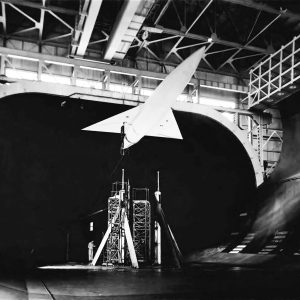
The July 1948 Inspection at the Ames Laboratory highlighted the facility’s new wind tunnels and work on heat transfer and aircraft control systems.
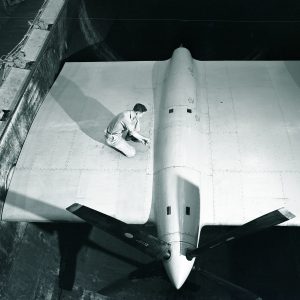
During the September 1948 Inspection, the NACA renamed its Cleveland laboratory in honor of the recently deceased George W. Lewis.
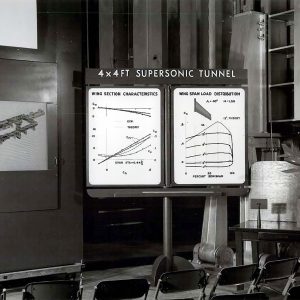
Langley’s biennial Inspection in May 1949 featured its recent work in high-speed aerodynamics, particularly in the transonic stage.
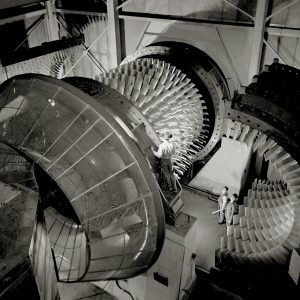
At the September 1949 Inspection, the NACA unveiled Lewis’ recently completed 8-by 6-Foot Supersonic Wind Tunnel and a new style of presenting the technical information in a more understandable manner.
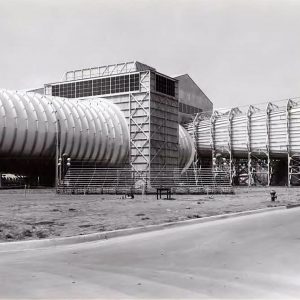
The July 1950 biennial Inspection at the Ames Laboratory’s took place shortly after the onset of the Korean War and signaled the beginning of the NACA’s transition into missile and rocket research.
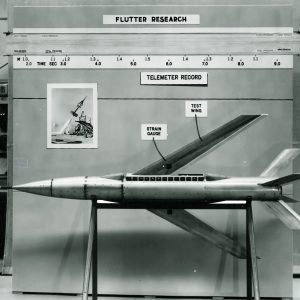
Langley’s 1951 biennial Inspection addressed tools necessary for transonic research and efforts to transition from manual data computations to mechanical and digital computers.
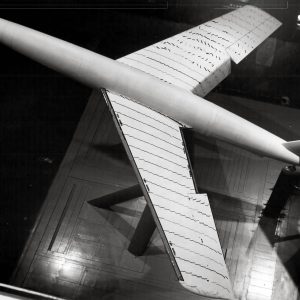
Increasing Cold War security concerns led to a reduction of technical information on display during the July 1952 Inspection at Ames.
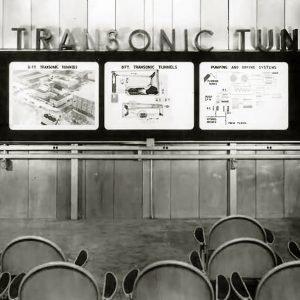
The Langley Laboratory featured its helicopter research during the biennial Inspection in May 1953.
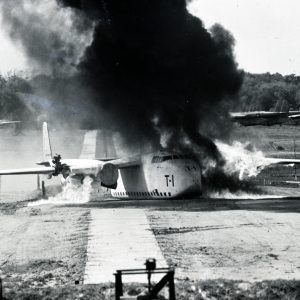
The Lewis Laboratory’s June 1954 Inspection emphasized the NACA’s role in the Cold War, while demonstrating the new Propulsion Systems Laboratory and its growing rocket research.
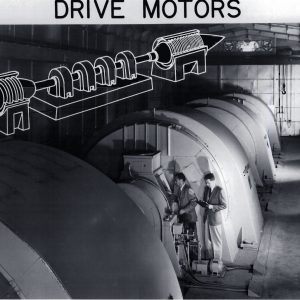
The talks at the June 1955 Inspection of the Ames Laboratory revealed that the more advanced aircraft of the future required the same type of NACA research as previous generations.
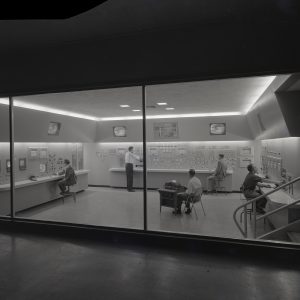
The May 1956 Inspection was dedicated entirely to the Lewis Laboratory’s new Unitary Plan Tunnel (the 10- by 10-Foot Supersonic Wind Tunnel).
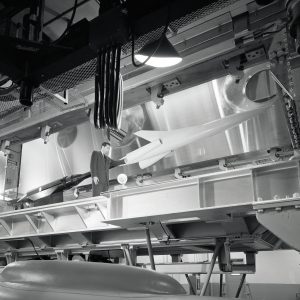
The October 1957 Inspection at the Lewis Laboratory ushered the NACA into the space age and signaled the beginning of the end for the agency.
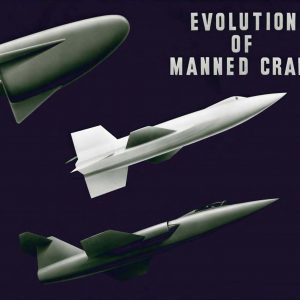
The July 1958 Inspection at Ames was both the laboratory’s final Inspection and the final Inspection of the NACA era.
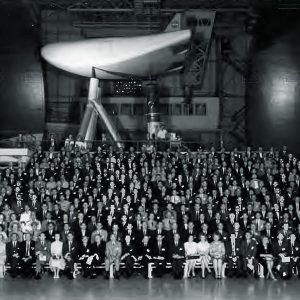
NASA’s first Inspection, held at Langley in May 1964, emphasized the role the former NACA labs were playing in the new Office of Advanced Research and Technology (OART).
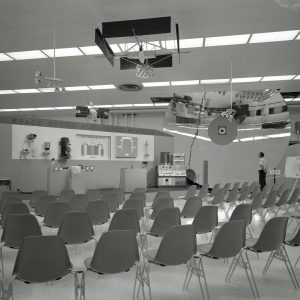
Lewis Research Center held an Inspection in October 1966 to mark its 25th anniversary and demonstrate both its space research and resurgent aeropropulsion work.
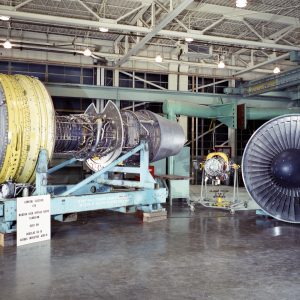
NASA’s final Inspection, held at Lewis in September 1973, sought to demonstrate a wide variety a civilian applications for NASA technology.